Territory and culture
THE NARROW STREETS BORDERED BY DRY-STONE WALLS
Dry stone walls are a constant feature of the Salento landscape; in fact, they delimit all the fields and properties and accompany the traveler along the local streets. They are traditional creations in local stone, a calcareous sedimentary rock present in abundance in the area.
Their construction is an ancient art based on skill and precision, the stones, in fact, are not placed there by chance but must be cut and adapted so as to fit perfectly with each other the other. And it is precisely thanks to this “perfect fit” to which we owe the strength and consistency of the construction that takes place without the use of mortar or cement.
The construction of dry stone walls begins with the collection of stones in the fields; removed to make way for crops. The stones are then carried and cleaned by hand to remove dirt and weeds and cut and shaped to fit each other. Thus conceived, the structure becomes very resistant and lasts a long time, thanks also to the calcareous rock of which it is made, which is resistant to erosion and the action of the elements. They are beautiful to look at and are still used today for the creation of the typical traditional rural landscape.
The dry stone walls that delimit most of our narrow streets connecting the Salento villages have now become a tourist attraction, many hikers and architecture enthusiasts visit the region also to admire these ancient buildings
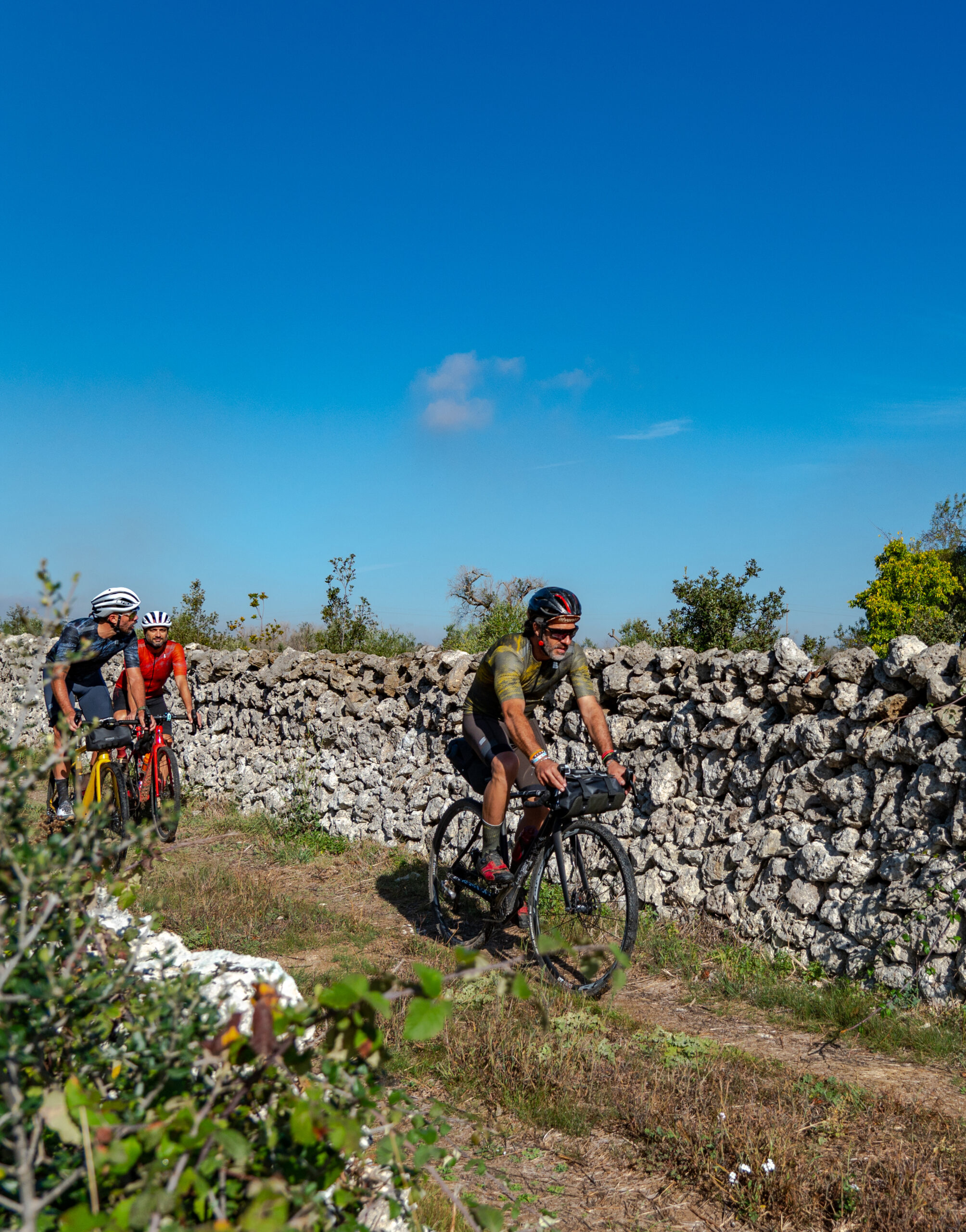
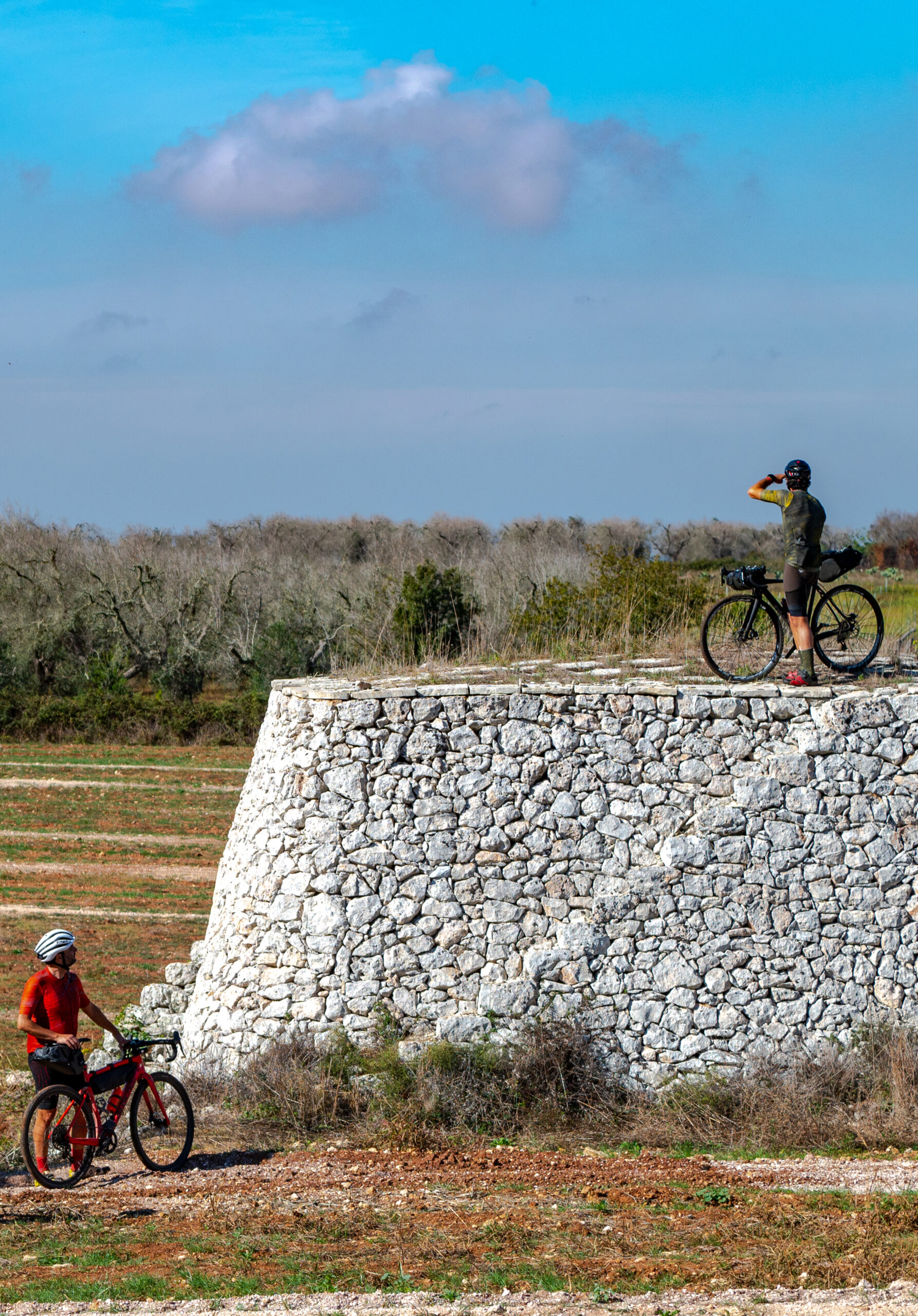
LE PAJARE
The dry stone structures characterize the rural landscape of Salento and express the reclamation action carried out by the laborers. The industrious peasants, who revived the Salento countryside until a few decades ago, have thus left us an indelible mark of their passage: a myriad of walls that follow one another and intersect, ovens, spase, littere, liame</em >, and, above all, the pajare: these are shelters used by farmers to find shelter from a sudden storm or to enjoy a cool afternoon rest, during sunny spring afternoons and summer.
Together with the pajare there are numerous other constructions, made of dry stones, such as the so-called ncurtaturi, i.e. the stables where domestic animals were housed: a donkey, a pig and rare cases a cow.
Pase and the littere structures used for drying: figs, tomatoes, peppers, etc. Figs, in particular, were of fundamental importance for the farmers’ economy, as a fruit to eat in the summer or to be kept in the capase for the remaining months. The furnari where bread was baked, the frisedde (friselle) were biscuits and figs were roasted.
The aie which are circular spaces, delimited by a circle of squared tuff ashlars where, inside them, an ancestral operation was carried out: the threshing of the grain. This was done with sticks and poles, with the help of a donkey, which pounded the harvest with its motion, or by exploiting the strength of an ox that pulled the so-called pisara</ em> (large tuff monolith) with sharp edges, which broke and shredded the ears and shelled the wheat. At the end of the daily operations then, so that no grain of wheat was lost, the hens were released and made a clean sweep.
Near a pajara, it was also customary to find a pila made of Lecce stone, used to water the cattle and do the laundry and some setting< /strong>, stone seats on which the peasants spent their few moments of leisure in company.
THE MENHIR
The Menhirs are megalithic monuments found in many parts of the world, including Salento. They consist of slender and elongated stones, usually of large dimensions, which are erected in an upright position.
The origins of the menhirs in Salento, it is thought, date back to prehistory, around 4000-3000 BC. There are several theories regarding their original function, including the one that sees the menhirs as religious or ritual symbols, or as territorial or boundary marks. Other theories suggest that they were used as agricultural tools, to indicate the seasons or to line fields.
In general, the menhirs are considered an important cultural heritage of the region, and have been the subject of numerous archaeological investigations and studies. These vertical megaliths characterize the whole Salento area and with their grandeur and mysticism they have always accompanied the itineraries in these places.
In general, the menhirs are one of the first expressions of human art and a testimony of the life and culture of our ancestors, they represent an important contribution to the understanding of the history and culture of Salento and of the ancient world in general.
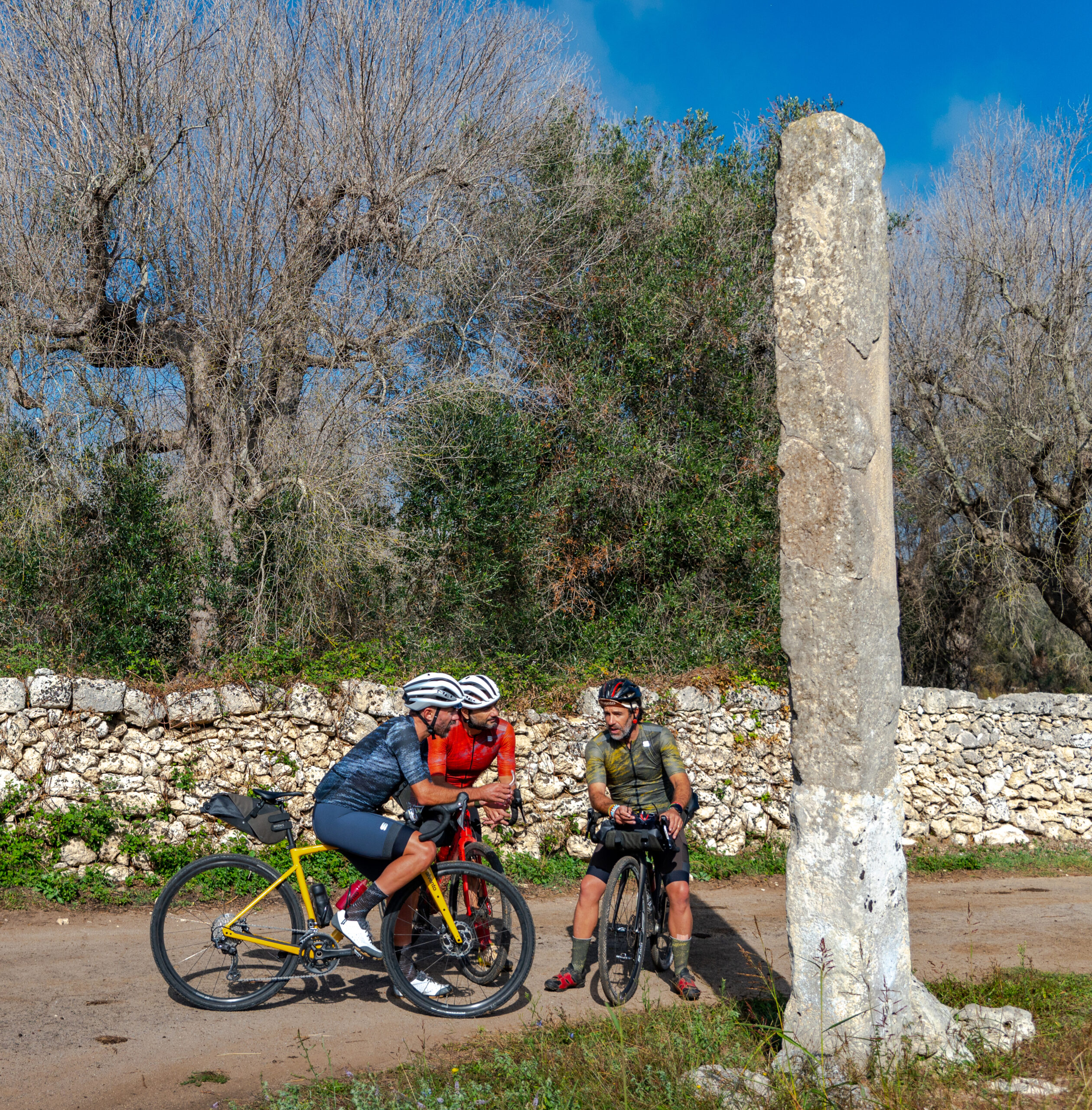
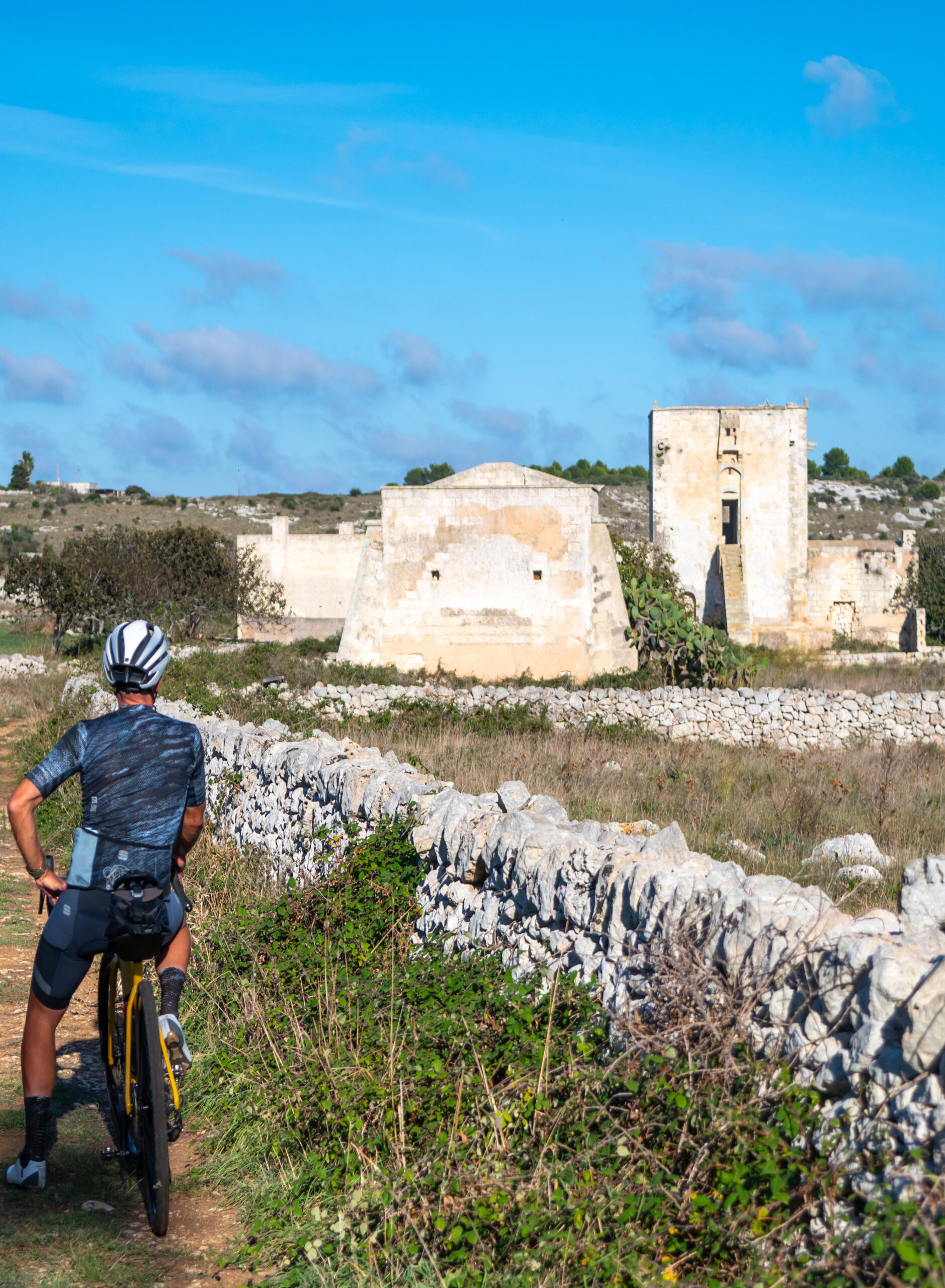
THE FORTIFIED FARMS
Examining the history of Salento and crossing its territory, it is possible to come across country buildings, called ‘masserie‘. The origin of these ancient structures dates back to the Middle Ages, and were inhabited from families of farmers, “massari“.
The typical structure of the farm has a central courtyard, around which various rooms are distributed: the house of the farmer, the stables and the enclosures for the animals.
Following the fall of the Byzantine Empire in 1453, the Salento peninsula became a frequent destination for looting and raids by the Turks (which resulted in the siege of Otranto in 1480 strong>). During the sixteenth century, to avoid these attacks, Charles V of Habsburg implemented a plan to defend the territory, which led to the construction of towers and walls around the farms, which for this subsequently, called ‘fortified‘. The tower had three functions: the upper part, dedicated to the owner, easily allowed sightings; the lower part, on the other hand, was used as a workplace: transformation of milk into cheese or for the milling of olives or as a warehouse.
From the mid-17th century, following the enhancement of the rural environment, it gave rise to the birth of the masseria-villa, a holiday resort used to escape the summer heat of the city. The farms are therefore enriched with rich portals, balconies and belvederes, gardens and stucco decorations and frescoes, ornaments that transform these rural and spartan structures into small jewels of fine architecture.
THE FORTIFIED TOWERS
The history of Salento has been characterized for a long time by incursions and raids by the Turks, Barbary corsairs and marauders of all kinds who have tormented every place on the coast for centuries, often penetrating and causing destruction even in inland areas. The populations lived in constant terror. The saying “Mamma li Turchi” that was imprinted in the soul of the people is still famous today. The Terra d’Otranto was the most exposed to Ottoman expansion and was the real “maritime frontier” of the entire Christian West
This important part of Salento’s history is represented today by what remains of its articulated defensive system. Centuries of wars, internal struggles, invasions and foreign dominations are witnessed today by coastal towers, castles, farms and fortified buildings of all kinds.
In particular, the coastal towers with lookout functions that follow each other, in sight, along the entire coast, are one of the most important legacies of that period … today considered real works immersed in a beautiful nature and with a sea coast in the background of rare beauty.
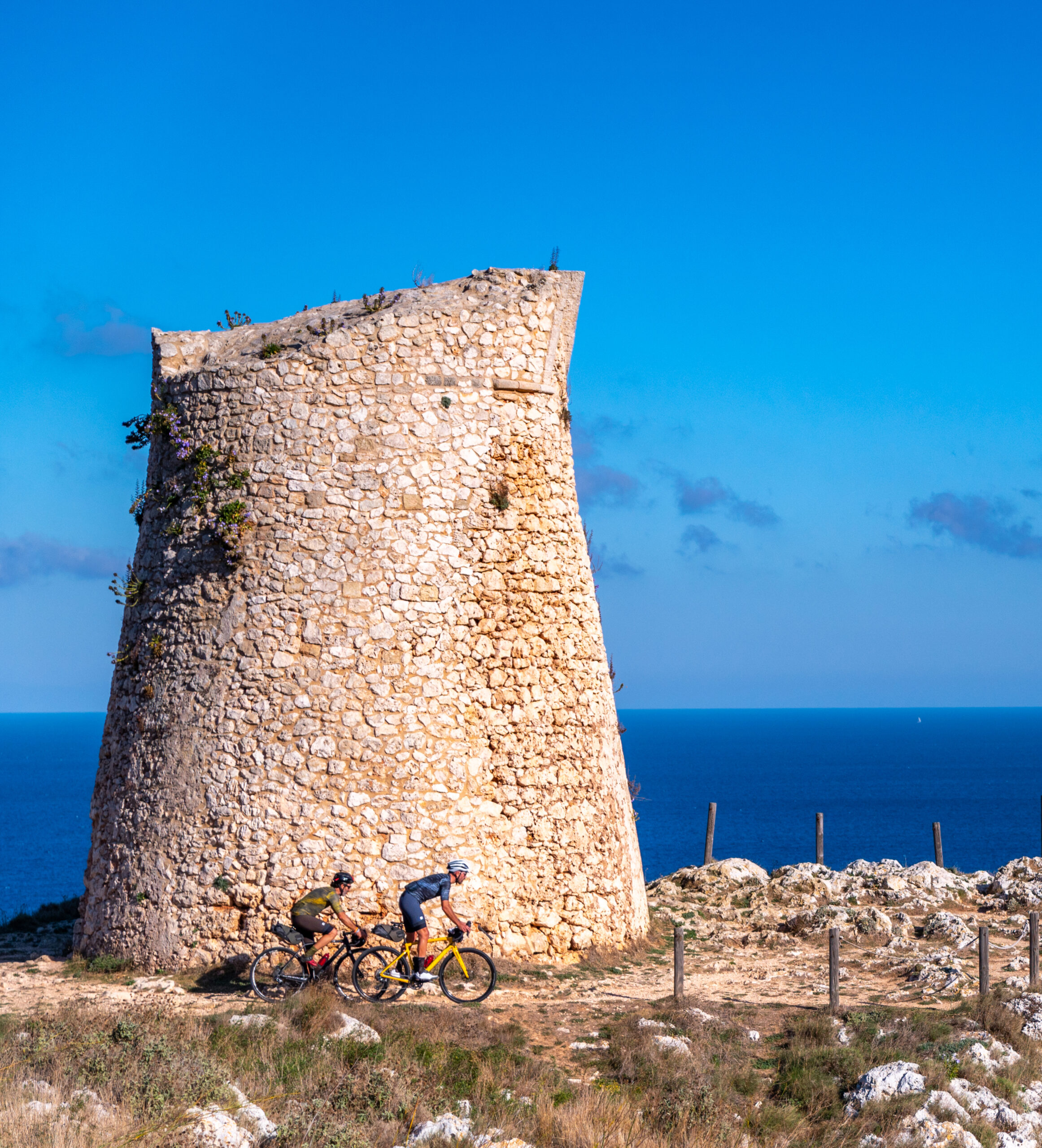
Territory and culture

THE NARROW STREETS BORDERED BY DRY-STONE WALLS
Dry stone walls are a constant feature of the Salento landscape; in fact, they delimit all the fields and properties and accompany the traveler along the local streets. They are traditional creations in local stone, a calcareous sedimentary rock present in abundance in the area.
Their construction is an ancient art based on skill and precision, the stones, in fact, are not placed there by chance but must be cut and adapted so as to fit perfectly with each other the other. And it is precisely thanks to this “perfect fit” to which we owe the strength and consistency of the construction that takes place without the use of mortar or cement.
The construction of dry stone walls begins with the collection of stones in the fields; removed to make way for crops. The stones are then carried and cleaned by hand to remove dirt and weeds and cut and shaped to fit each other. Thus conceived, the structure becomes very resistant and lasts a long time, thanks also to the calcareous rock of which it is made, which is resistant to erosion and the action of the elements. They are beautiful to look at and are still used today for the creation of the typical traditional rural landscape.
The dry stone walls that delimit most of our narrow streets connecting the Salento villages have now become a tourist attraction, many hikers and architecture enthusiasts visit the region also to admire these ancient buildings

LE PAJARE
The dry stone structures characterize the rural landscape of Salento and express the reclamation action carried out by the laborers. The industrious peasants, who revived the Salento countryside until a few decades ago, have thus left us an indelible mark of their passage: a myriad of walls that follow one another and intersect, ovens, spase, littere, liame</em >, and, above all, the pajare: these are shelters used by farmers to find shelter from a sudden storm or to enjoy a cool afternoon rest, during sunny spring afternoons and summer.
Together with the pajare there are numerous other constructions, made of dry stones, such as the so-called ncurtaturi, i.e. the stables where domestic animals were housed: a donkey, a pig and rare cases a cow.
Pase and the littere structures used for drying: figs, tomatoes, peppers, etc. Figs, in particular, were of fundamental importance for the farmers’ economy, as a fruit to eat in the summer or to be kept in the capase for the remaining months. The furnari where bread was baked, the frisedde (friselle) were biscuits and figs were roasted.
The aie which are circular spaces, delimited by a circle of squared tuff ashlars where, inside them, an ancestral operation was carried out: the threshing of the grain. This was done with sticks and poles, with the help of a donkey, which pounded the harvest with its motion, or by exploiting the strength of an ox that pulled the so-called pisara</ em> (large tuff monolith) with sharp edges, which broke and shredded the ears and shelled the wheat. At the end of the daily operations then, so that no grain of wheat was lost, the hens were released and made a clean sweep.
Near a pajara, it was also customary to find a pila made of Lecce stone, used to water the cattle and do the laundry and some setting< /strong>, stone seats on which the peasants spent their few moments of leisure in company.

THE MENHIR
The Menhirs are megalithic monuments found in many parts of the world, including Salento. They consist of slender and elongated stones, usually of large dimensions, which are erected in an upright position.
The origins of the menhirs in Salento, it is thought, date back to prehistory, around 4000-3000 BC. There are several theories regarding their original function, including the one that sees the menhirs as religious or ritual symbols, or as territorial or boundary marks. Other theories suggest that they were used as agricultural tools, to indicate the seasons or to line fields.
In general, the menhirs are considered an important cultural heritage of the region, and have been the subject of numerous archaeological investigations and studies. These vertical megaliths characterize the whole Salento area and with their grandeur and mysticism they have always accompanied the itineraries in these places.
In general, the menhirs are one of the first expressions of human art and a testimony of the life and culture of our ancestors, they represent an important contribution to the understanding of the history and culture of Salento and of the ancient world in general.

THE FORTIFIED FARMS
Examining the history of Salento and crossing its territory, it is possible to come across country buildings, called ‘masserie‘. The origin of these ancient structures dates back to the Middle Ages, and were inhabited from families of farmers, “massari“.
The typical structure of the farm has a central courtyard, around which various rooms are distributed: the house of the farmer, the stables and the enclosures for the animals.
Following the fall of the Byzantine Empire in 1453, the Salento peninsula became a frequent destination for looting and raids by the Turks (which resulted in the siege of Otranto in 1480 strong>). During the sixteenth century, to avoid these attacks, Charles V of Habsburg implemented a plan to defend the territory, which led to the construction of towers and walls around the farms, which for this subsequently, called ‘fortified‘. The tower had three functions: the upper part, dedicated to the owner, easily allowed sightings; the lower part, on the other hand, was used as a workplace: transformation of milk into cheese or for the milling of olives or as a warehouse.
From the mid-17th century, following the enhancement of the rural environment, it gave rise to the birth of the masseria-villa, a holiday resort used to escape the summer heat of the city. The farms are therefore enriched with rich portals, balconies and belvederes, gardens and stucco decorations and frescoes, ornaments that transform these rural and spartan structures into small jewels of fine architecture.

THE FORTIFIED TOWERS
The history of Salento has been characterized for a long time by incursions and raids by the Turks, Barbary corsairs and marauders of all kinds who have tormented every place on the coast for centuries, often penetrating and causing destruction even in inland areas. The populations lived in constant terror. The saying “Mamma li Turchi” that was imprinted in the soul of the people is still famous today. The Terra d’Otranto was the most exposed to Ottoman expansion and was the real “maritime frontier” of the entire Christian West
This important part of Salento’s history is represented today by what remains of its articulated defensive system. Centuries of wars, internal struggles, invasions and foreign dominations are witnessed today by coastal towers, castles, farms and fortified buildings of all kinds.
In particular, the coastal towers with lookout functions that follow each other, in sight, along the entire coast, are one of the most important legacies of that period … today considered real works immersed in a beautiful nature and with a sea coast in the background of rare beauty.

